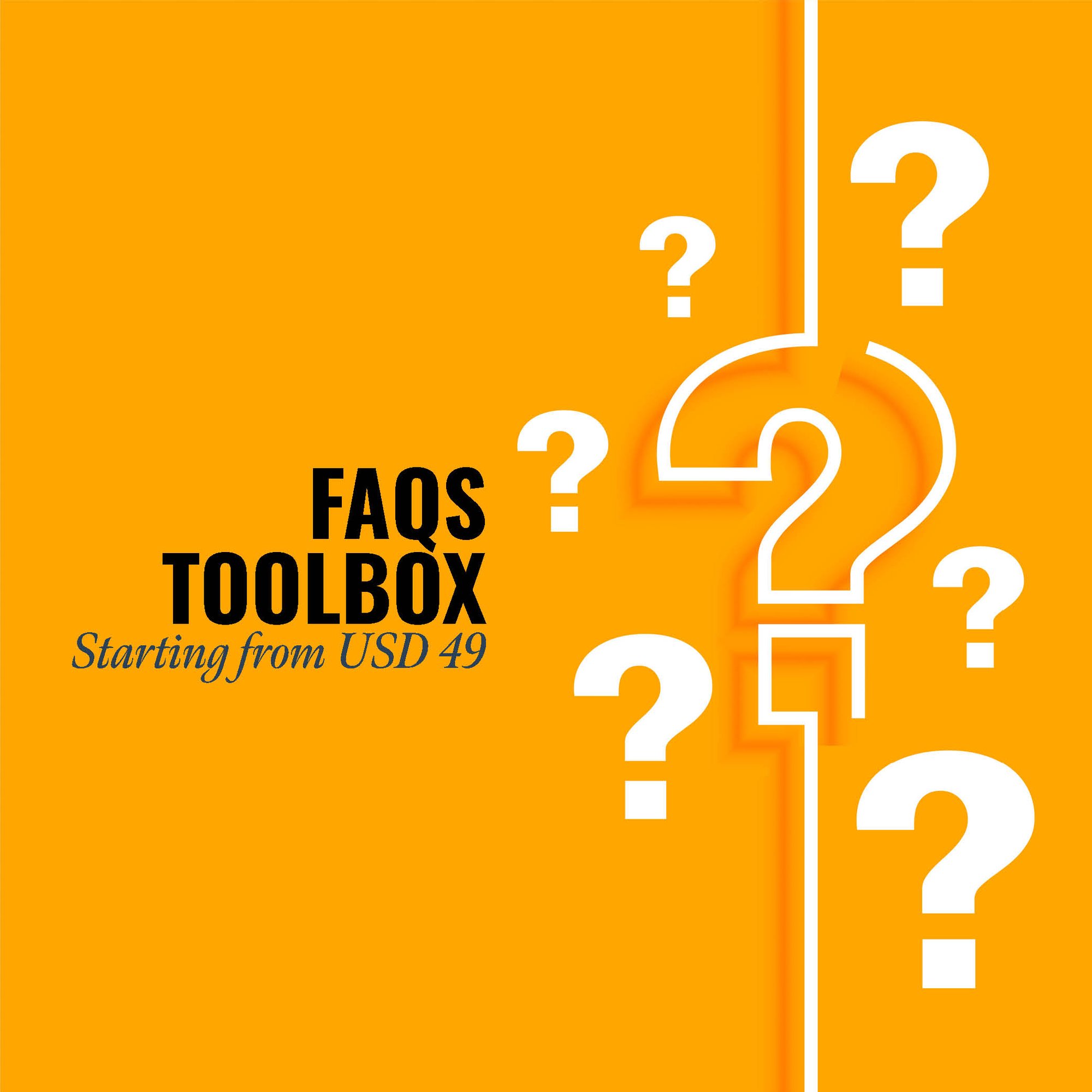The Network Administration department in a multinational organization manages the infrastructure that enables communication and connectivity across the company's network. It ensures the smooth operation of hardware, software, and protocols that facilitate data exchange and access to resources. Responsibilities include network design, configuration, monitoring, and troubleshooting to maintain high availability, security, and performance. The department collaborates closely with IT teams and stakeholders to implement and enforce network policies, standards, and upgrades to support business operations globally.
Standard Operating Procedures (SOPs) play a pivotal role in transforming the Network Administration department within a multinational organization by introducing standardized processes and protocols that enhance efficiency, reliability, and security of the network infrastructure.
Firstly, SOPs establish clear guidelines for network setup and configuration, ensuring consistency across different locations and minimizing configuration errors. This standardization streamlines deployment processes for new network equipment and services, reducing deployment time and operational costs.
Secondly, SOPs define proactive monitoring and maintenance procedures, including regular network performance assessments, security audits, and backup protocols. By adhering to these SOPs, the department can detect potential issues early, implement preventive measures, and maintain network uptime critical for global operations.
Moreover, SOPs provide a structured approach to network troubleshooting and incident response. They outline steps for identifying and resolving network issues promptly, minimizing downtime and mitigating the impact on business continuity.
Additionally, SOPs govern network security practices, including access controls, encryption standards, and vulnerability management. This ensures compliance with regulatory requirements and safeguards sensitive data from unauthorized access or breaches.
Ultimately, SOPs empower the Network Administration department to operate more efficiently, deliver consistent service levels, adapt to technological advancements, and support the organization's growth and global footprint effectively.
TOP 100 STANDARD OPERATING PROCEDURES FOR NETWORK ADMINISTRATION DEPARTMENT
- DSOP-044-001: Standard Operating Procedure for Network Design
- DSOP-044-002: Standard Operating Procedure for Network Configuration Management
- DSOP-044-003: Standard Operating Procedure for Network Monitoring
- DSOP-044-004: Standard Operating Procedure for Network Troubleshooting
- DSOP-044-005: Standard Operating Procedure for Network Security Management
- DSOP-044-006: Standard Operating Procedure for Firewall Management
- DSOP-044-007: Standard Operating Procedure for VPN Management
- DSOP-044-008: Standard Operating Procedure for Router Configuration
- DSOP-044-009: Standard Operating Procedure for Switch Configuration
- DSOP-044-010: Standard Operating Procedure for Wireless Network Management
- DSOP-044-011: Standard Operating Procedure for Network Capacity Planning
- DSOP-044-012: Standard Operating Procedure for IP Address Management (IPAM)
- DSOP-044-013: Standard Operating Procedure for DNS Management
- DSOP-044-014: Standard Operating Procedure for DHCP Management
- DSOP-044-015: Standard Operating Procedure for Network Documentation
- DSOP-044-016: Standard Operating Procedure for Network Performance Optimization
- DSOP-044-017: Standard Operating Procedure for Network Backup and Recovery
- DSOP-044-018: Standard Operating Procedure for Network Incident Response
- DSOP-044-019: Standard Operating Procedure for Network Change Management
- DSOP-044-020: Standard Operating Procedure for Network Policy Development
- DSOP-044-021: Standard Operating Procedure for Network Access Control
- DSOP-044-022: Standard Operating Procedure for Network Compliance Audits
- DSOP-044-023: Standard Operating Procedure for Network Traffic Analysis
- DSOP-044-024: Standard Operating Procedure for Network Load Balancing
- DSOP-044-025: Standard Operating Procedure for Network Virtualization
- DSOP-044-026: Standard Operating Procedure for Network Disaster Recovery
- DSOP-044-027: Standard Operating Procedure for Network Optimization
- DSOP-044-028: Standard Operating Procedure for Network Performance Monitoring
- DSOP-044-029: Standard Operating Procedure for Network Capacity Management
- DSOP-044-030: Standard Operating Procedure for Network Vulnerability Assessment
- DSOP-044-031: Standard Operating Procedure for Network Patch Management
- DSOP-044-032: Standard Operating Procedure for Network Security Incident Response
- DSOP-044-033: Standard Operating Procedure for Network Equipment Procurement
- DSOP-044-034: Standard Operating Procedure for Network Asset Management
- DSOP-044-035: Standard Operating Procedure for Network Vendor Management
- DSOP-044-036: Standard Operating Procedure for Network Service Level Agreements (SLAs)
- DSOP-044-037: Standard Operating Procedure for Network Configuration Backup
- DSOP-044-038: Standard Operating Procedure for Network Performance Testing
- DSOP-044-039: Standard Operating Procedure for Network Automation
- DSOP-044-040: Standard Operating Procedure for Network Incident Reporting
- DSOP-044-041: Standard Operating Procedure for Network Service Restoration
- DSOP-044-042: Standard Operating Procedure for Network Monitoring Tool Administration
- DSOP-044-043: Standard Operating Procedure for Network Architecture Review
- DSOP-044-044: Standard Operating Procedure for Network Protocol Management
- DSOP-044-045: Standard Operating Procedure for Network Documentation Review
- DSOP-044-046: Standard Operating Procedure for Network Performance Metrics Reporting
- DSOP-044-047: Standard Operating Procedure for Network Technology Evaluation
- DSOP-044-048: Standard Operating Procedure for Network Service Improvement
- DSOP-044-049: Standard Operating Procedure for Network Service Desk Support
- DSOP-044-050: Standard Operating Procedure for Network Maintenance Scheduling
- DSOP-044-051: Standard Operating Procedure for Network Configuration Standardization
- DSOP-044-052: Standard Operating Procedure for Network Capacity Assessment
- DSOP-044-053: Standard Operating Procedure for Network Protocol Analysis
- DSOP-044-054: Standard Operating Procedure for Network Device Firmware Updates
- DSOP-044-055: Standard Operating Procedure for Network Compliance Review
- DSOP-044-056: Standard Operating Procedure for Network Service Catalog Management
- DSOP-044-057: Standard Operating Procedure for Network Performance Benchmarking
- DSOP-044-058: Standard Operating Procedure for Network Security Policy Enforcement
- DSOP-044-059: Standard Operating Procedure for Network Service Continuity Planning
- DSOP-044-060: Standard Operating Procedure for Network Inventory Management
- DSOP-044-061: Standard Operating Procedure for Network Service Decommissioning
- DSOP-044-062: Standard Operating Procedure for Network Audit Trail Monitoring
- DSOP-044-063: Standard Operating Procedure for Network Incident Trend Analysis
- DSOP-044-064: Standard Operating Procedure for Network Architecture Optimization
- DSOP-044-065: Standard Operating Procedure for Network Configuration Review
- DSOP-044-066: Standard Operating Procedure for Network Performance Analysis
- DSOP-044-067: Standard Operating Procedure for Network Capacity Forecasting
- DSOP-044-068: Standard Operating Procedure for Network Security Awareness Training
- DSOP-044-069: Standard Operating Procedure for Network Protocol Compliance
- DSOP-044-070: Standard Operating Procedure for Network Device Lifecycle Management
- DSOP-044-071: Standard Operating Procedure for Network Service Level Reporting
- DSOP-044-072: Standard Operating Procedure for Network Change Implementation
- DSOP-044-073: Standard Operating Procedure for Network Incident Escalation
- DSOP-044-074: Standard Operating Procedure for Network Infrastructure Review
- DSOP-044-075: Standard Operating Procedure for Network Service Improvement Plans
- DSOP-044-076: Standard Operating Procedure for Network Configuration Automation
- DSOP-044-077: Standard Operating Procedure for Network Performance Monitoring Tools
- DSOP-044-078: Standard Operating Procedure for Network Security Incident Handling
- DSOP-044-079: Standard Operating Procedure for Network Technology Integration
- DSOP-044-080: Standard Operating Procedure for Network Compliance Certification
- DSOP-044-081: Standard Operating Procedure for Network Resource Allocation
- DSOP-044-082: Standard Operating Procedure for Network Policy Review
- DSOP-044-083: Standard Operating Procedure for Network Capacity Utilization Analysis
- DSOP-044-084: Standard Operating Procedure for Network Infrastructure Upgrades
- DSOP-044-085: Standard Operating Procedure for Network Performance Reporting
- DSOP-044-086: Standard Operating Procedure for Network Incident Management
- DSOP-044-087: Standard Operating Procedure for Network Protocol Optimization
- DSOP-044-088: Standard Operating Procedure for Network Configuration Verification
- DSOP-044-089: Standard Operating Procedure for Network Service Catalog Review
- DSOP-044-090: Standard Operating Procedure for Network Technology Roadmap
- DSOP-044-091: Standard Operating Procedure for Network Security Governance
- DSOP-044-092: Standard Operating Procedure for Network Device Inventory Review
- DSOP-044-093: Standard Operating Procedure for Network Incident Resolution
- DSOP-044-094: Standard Operating Procedure for Network Architecture Documentation
- DSOP-044-095: Standard Operating Procedure for Network Performance Enhancement
- DSOP-044-096: Standard Operating Procedure for Network Security Posture Assessment
- DSOP-044-097: Standard Operating Procedure for Network Capacity Expansion
- DSOP-044-098: Standard Operating Procedure for Network Incident Notification
- DSOP-044-099: Standard Operating Procedure for Network Technology Updates
- DSOP-044-100: Standard Operating Procedure for Network Service Improvement Initiatives
This article is Uploaded by: Priyanka, and Audited by: Premakani.
The above list of SOPs is beneficial for the following activities. Standard operating procedures, SOP consulting, SOP services, Business process optimization, Operational efficiency, Process improvement, SOP development, SOP documentation, SOP implementation, Business process management, Process documentation, Procedure writing, Quality management systems, Compliance management, Workflow automation, Process standardization, Operational excellence, Business continuity planning, Risk management, SOP consulting services, SOP experts, Operational consulting, Process mapping, SOP training, SOP manuals, Process engineering, Business optimization, Procedure manuals, SOP templates, Efficiency consulting, SOP audit, Continuous improvement, Lean processes, Six Sigma, Process reengineering, SOP creation, Policy development, Procedure standardization, Business efficiency, Compliance solutions, SOP frameworks, Process guidelines, Operational standards, SOP compliance, Workflow efficiency, SOP best practices, Process control, Quality assurance, SOP systems, Operational audits, SOP support, Business improvement, SOP reviews, Process benchmarking, SOP analysis, Performance improvement, SOP maintenance, SOP optimization, Operational performance, SOP assessments, SOP planning, Process effectiveness, SOP projects, Operational risk, SOP tools, Business process reviews, SOP updates, SOP monitoring, Process compliance, Procedure audits, Business process audits, SOP strategies, SOP management, SOP solutions, Procedure optimization, Business standards, Operational procedures, SOP software, Quality procedures, Process audits, Procedure development, SOP workshops, Operational processes, Process manuals, Business procedure services, SOP for small businesses, Corporate SOPs, Standard operating procedure examples, SOP for startups, Industry-specific SOPs, SOP for manufacturing, Healthcare SOPs, SOP for retail, SOP for logistics, SOP for hospitality, SOP for education, SOP for finance, SOP for IT, SOP for marketing, SOP for HR, SOP for sales, SOP for customer service, SOP for procurement, SOP for supply chain, SOP for research and development, SOP for new product development, SOP for quality control, SOP for safety, SOP for environmental management, SOP for project management, SOP for construction, SOP for energy, SOP for telecommunications, SOP for pharmaceuticals, SOP for agriculture, SOP for food and beverage, SOP for automotive, SOP for aerospace, SOP for defens, SOP for healthcare providers, SOP for hospitals, SOP for clinics, SOP for insurance, SOP for legal firms, SOP for non-profits, SOP for government, SOP for NGOs, SOP for educational institutions, SOP for universities, SOP for schools, SOP for research institutions, SOP for laboratories, SOP for media, SOP for entertainment, SOP for tourism, SOP for real estate, SOP for facilities management, SOP for transportation, SOP for utilities, SOP for mining, SOP for chemical industry, SOP for textiles, SOP for fashion, SOP for electronics, SOP for consumer goods, SOP for retail stores, SOP for wholesale, SOP for e-commerce.
Your purchase includes 20 SOP Templates. Please note, checklists and forms recommended in the SOP Templates are not included. To access all 100 SOP Templates listed above, please select a quantity of FIVE. Our Customer Support team will contact you within one business day to gather your requirements. In the meantime, if you have already purchased the SOP Templates, kindly complete the SOP ToolBox Information Sheet.
For more information or SOP Plans please visit SOP ToolBox.
















